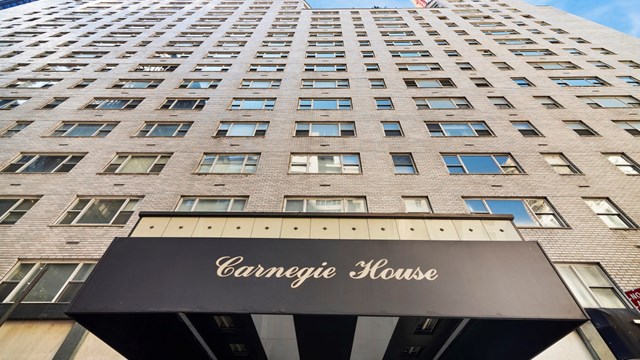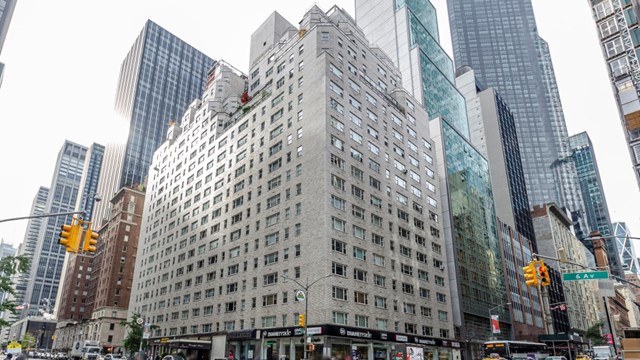Imagine this: It's a rainy gray Monday morning. You're snug in bed, dreaming away, when the alarm rings. Six thirty. You have just enough time to hit the gym before work, but the very idea of suiting up and traipsing out into the cold world to go work out makes you want to pull the covers over your head, hit the snooze bar five or six times, and just grab a big, buttery croissant on your way to the office.
But what if you could roll out of bed, slip on your favorite pair of sweats, stroll down the hall to the elevator, hit the "down" button, and be in your own private gym in under a minute? Not only would you save transit time, but how much better would your workout be if you knew that your shower, your paper, and a fresh pot of coffee were waiting for you when you finished, just an elevator ride away?
In our stressed society, short on time and big on convenience, the addition of in-house gyms for co-op and condo dwellers has almost become a necessity. Not only does a modern, well-maintained health and workout facility increase residents' enjoyment of their home, it increases property value for everyone. That's saying nothing about the increased energy, improved community relations, and overall better health that come from a regular regimen of physical exercise.
Adding a fitness center - or a "lifestyle center" that may include some more spa-like components - to your building is a win-win project, if the initial planning is done sensibly and in consultation with an expert. Clearly, installing a gym or fitness center is a bit more involved than replacing worn-out lobby rugs or switching to peonies in the planters out front. Here are some questions your board must ask before putting anything in motion:
First of all, your board must determine exactly how much space is available. Approximately 500 square feet is the minimum amount of space you need for a fitness center to be feasible. That's just enough room for a few pieces of cardiovascular equipment and a "multi-gym" with pulleys and weight stacks. Recent building renovation projects include One Beekman Place, which replaced an existing fitness center with a more upscale version, and The Horizon on First Avenue, which just completed a major renovation to their building and fitness center component, according to Wiezycki.
First, it's important to remember that a gym produces noise and vibrations from both the machines and the free weights. If there are residences, or even commercial spaces adjacent to the gym space, special consideration may have to be made to keep clanking and vibration to a minimum to avoid disturbing the neighbors.
In this case, a consultant with lots of experience can guide you to the right professionals so that you can choose or create an appropriate spot. A consultant can help determine a design that complies with both practical needs and building codes - and one that serves your purposes on a variety of levels.
Consultants involved in this field intimately understand the design requirements of fitness/lifestyle facilities. They can help you design a fitness facility that will meet your residents' needs, including the size and location of the components, the finishes necessary, and the most appropriate equipment.
Making the right choices of equipment is perhaps the most important component in the success of your facility. Knowledgeable, well-trained equipment representatives can help you select the most appropriate, most functional, durable, economical and attractive equipment your budget allows. You want someone on your side who will provide professional installation and dependable servicing of the equipment you've invested in. This is not necessarily someone whose only goal is equipment sales. An independent consultant can help you with expert guidance and advice.
No matter how safe the environment, there is always the possibility that someone will be injured, and it is crucial that buildings protect themselves from potential lawsuits. The most important thing a building can do to protect itself from liability is to have all residents sign a waver of liability and indemnity. By signing these forms, residents agree not to hold the building liable for accidents that occur in the fitness facilities. Waivers, however, do not completely protect the buildings, particularly if there is evidence of negligence.
Of course, the amount of money required depends on how fully loaded you decide to make your fitness center. Do you want just the basics, or do you want a four-star, resort-scale facility? Regardless, the real question is most often, "where will we get the money?" Again, there is more than one answer. Your board can do an assessment, or secure a loan. You might also consider offering residents "charter" memberships to the club. Those "buying in" to the facility can enjoy the membership while they live in the building, along with enhancing the value of their unit, should they decide to sell.
Where planning falls short, disaster often rears its ugly head. Consider, for example, the owners of a newly-opened fitness/lifestyle center who realized they had created a steam room without drains. Or perhaps the mortified owners of a racquetball court whose hitting wall was back-to-back with the wall of someone's apartment. At first, these sound like funny mistakes, but the humor is spoiled by the cost, and by knowing both mistakes were easily preventable. Call in the experts before you make the mistakes, and they will ultimately save you time and money.
Whereas a gym or fitness center offers people a facility in which to work out with cardio equipment, Nautilus-type circuit training equipment, and old-fashioned free weights, a lifestyle center includes all sorts of additional amenities and goes well beyond just fitness. Some centers are more like spas, offering massage therapy, yoga classes, and nutritional consulting, while still others feature darkrooms, children's playrooms, and even business centers.
Input from your neighbors is essential for success. Here are some tips on how to get some good feedback. Whether your community is comprised of families, singles, young professionals, seniors, or a combination, these methods will help you gather the information that you need:
Take the lead in establishing an exploratory committee to assess your building's needs and means. Get the residents and at least one other board member involved in the committee, and form focus groups. Do some homework: Visit other comparable fitness facilities, attend fitness trade shows, and visit fitness suppliers in your area to learn about the latest and best equipment. Interview or hire an expert for more constructive feedback and advice. Compile your building's wishes and budget limitations, your available space, and professional advice into a report. After the research is done and the report is written, the board can convene to review the information and refine it. Once the particulars are worked out, the project can move forward.
To determine what your building residents would like to see in a potential facility, send surveys to all residents, and include a due date for its return. Incentive prizes - like new bikes, free massages, and discounted memberships - are helpful in encouraging residents to fill out and return surveys. Suggestion slips are another wonderful tool and can provide candid information from residents. These suggestions may be submitted with names or without - and all should be answered in writing, whether the accommodation has been made to the suggestion or not.
You might also set up an attractive information table in the lobby of the building and have a representative hand out surveys during peak traffic hours. You could even offer free blood pressure screenings and body-fat analysis to entice residents to complete surveys. Displays of photos or renderings of the proposed facility or ones similar to it, can give residents an idea of the possibilities. Remember that free food and activities always draw a crowd.
Your frontline staff is essential to getting the word out about the proposed fitness facility and recording information about what residents want. Make sure that your concierge staff is aware of and kept current on all programs and all tools being used to gather information. Staff meetings are essential in imparting information and instilling and reinforcing your goals to your building staff. And - just as you listen to the suggestions of your residents, always allow the staff time to express their own feedback, as well as on what they hear from residents.
Everyone knows the value of keeping active and taking a proactive approach to fitness. By bringing the gym to your residents, you'll be adding value to your building while improving the health, well-being, and friendships in your community. If you do your research, assess the needs of the residents, and consult with an expert throughout the entire planning process, you can be assured that you are going to have a well-used, much-loved fitness center.







Leave a Comment